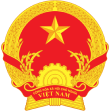Three-decade growth of Viet Nam-U.S. trade ties
VGP - As Viet Nam and the U.S. mark 30 years of diplomatic relations (July 7, 1995 – July 7, 2025), their economic ties have grown remarkably, entering a new chapter of dynamic cooperation.
Since the signing of the Bilateral Trade Agreement (BTA) in 2000, Viet Nam's export structure to the U.S. has undergone a notable transformation. This growth has been further accelerated by the establishment of the Comprehensive Strategic Partnership in 2023.
The two-way trade volume is now approaching the US$200 billion mark, a testament to the depth and vitality of the bilateral partnership.
Viet Nam's exports to the U.S. have expanded to include a wider range of processed and manufactured goods, alongside higher-value agro-forestry-fishery products. In return, Viet Nam imports high-tech and high-value-added industrial goods from the U.S., such as computers, electronic components, and machinery.
This complementary trade structure highlights the mutually beneficial nature of the relationship: Viet Nam supplies agricultural and labor-intensive products to meet U.S. demand, while the U.S. provides vital raw materials for Viet Nam's production and export sectors—such as cotton, soybeans, animal feed, chemicals, and equipment—driving its export-led growth.
During a recent working visit to the U.S., Minister of Industry and Trade Nguyen Hong Dien, in his role as the Prime Minister's Special Envoy, had working sessions with the Office of the U.S. Trade Representative (USTR), the Department of Energy (DOE), and other agencies. He also witnessed the signing of various cooperation agreements and procurement contracts between Vietnamese and U.S. enterprises covering machinery, raw materials, and services.
Minister Nguyen noted that over the past three decades—especially during the last 10 years of the Comprehensive Partnership and the nearly two years since the establishment of the Comprehensive Strategic Partnership—Viet Nam and the U.S. have made significant progress across multiple sectors. Economic, trade, and investment cooperation remains the cornerstone of the bilateral relationship.
The U.S. continues to be a key destination for Vietnamese businesses seeking to expand their global footprint. At the same time, Viet Nam is attracting increasing U.S. investment in high-tech sectors, particularly semiconductors and microchips. Viet Nam's growing role in the U.S.'s global supply chains reflects this deepening economic engagement, with American businesses playing a vital role in Viet Nam's transformation and development.
U.S. Ambassador to Viet Nam Marc E. Knapper emphasized that 2025 is a pivotal year in bilateral ties, offering a major opportunity to elevate cooperation to new heights, with trade and economic collaboration at the core.
Minister Nguyen reaffirmed that the two economies' complementarity is key to building strong, balanced, and sustainable trade relations. He reiterated Viet Nam's view of the U.S. as a leading strategic partner and expressed hope for further expanding trade and investment in a way that fosters mutual understanding and strategic trust./.

